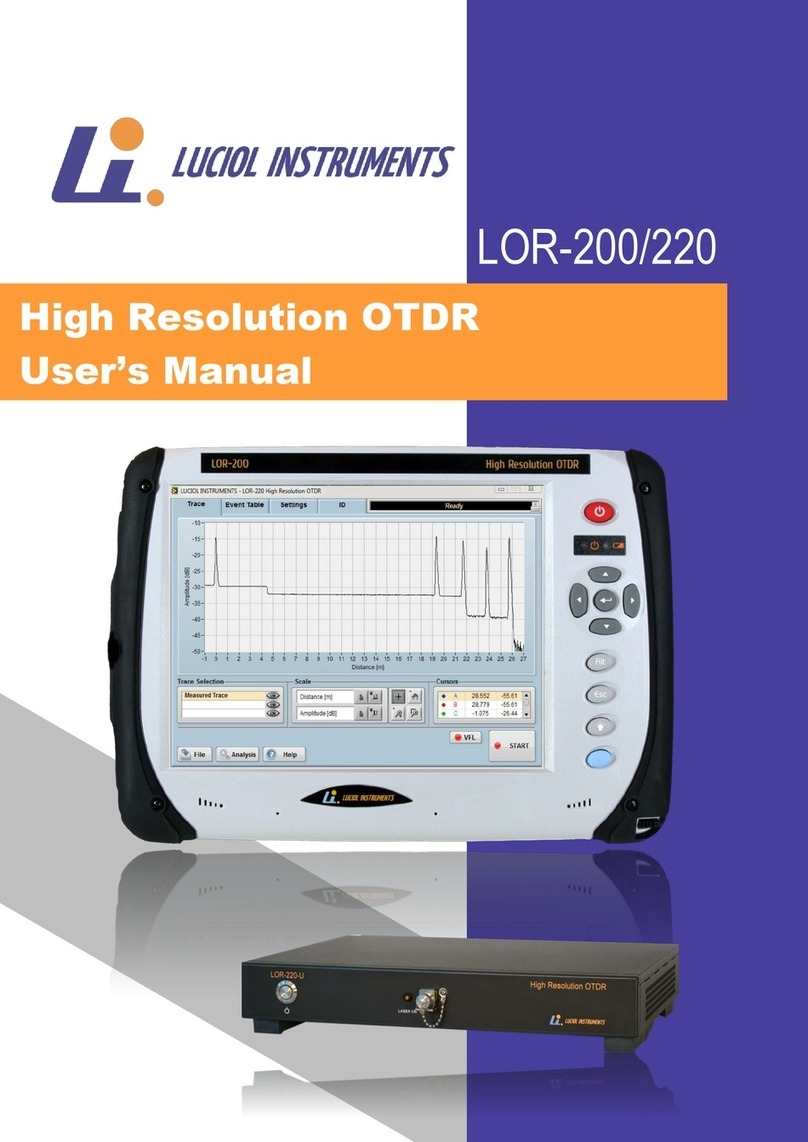
Table of Contents
1 INTRODUCTION...................................................................................................................................... 3
1QUICK GUIDE .................................................................................................................................. 4
1.1 OPERATING INSTRUCTIONS .......................................................................................................................4
1.2 NOTES .................................................................................................................................................4
2HARDWARE OVERVIEW .................................................................................................................. 5
2.1 THE FRONT PANEL..................................................................................................................................5
2.2 THE OPTICAL PORT .................................................................................................................................5
2.3 THE COMMUNICATION PORTS ..................................................................................................................6
2.4 THE POWER CONNECTOR.........................................................................................................................7
2.5 CHARGING THE BATTERY..........................................................................................................................8
2.6 CHANGING THE BATTERY .........................................................................................................................8
3SOFTWARE TOOLS .......................................................................................................................... 9
3.1 THE ON-SCREEN KEYBOARD .....................................................................................................................9
4OTDR SOFTWARE OVERVIEW.......................................................................................................... 9
4.1 THE MENU FUNCTIONS .........................................................................................................................10
4.1.1 The File Menu .........................................................................................................................10
4.1.2 The Analysis Menu ..................................................................................................................10
4.1.3 The Help Menu........................................................................................................................10
4.2 THE TABS............................................................................................................................................10
4.2.1 The Trace Tab .........................................................................................................................10
4.2.2 The Event Table Tab................................................................................................................12
4.2.3 The Settings Tab .....................................................................................................................13
4.2.4 The ID Tab...............................................................................................................................16
5MAKING MEASUREMENTS ............................................................................................................ 16
5.1 GENERAL MEASUREMENT SETUP..............................................................................................................16
5.1.1 Setting pulse-width and resolution.........................................................................................16
5.1.2 Setting the index of refraction ................................................................................................18
5.1.3 Setting the Rayleigh backscatter coefficient...........................................................................19
5.2 EXAMPLE MEASUREMENT SESSIONS..........................................................................................................20
5.2.1 Fiber loss measurement..........................................................................................................20
5.2.2 Single event analysis - Insertion loss and reflectance .............................................................21
5.2.3 2-point loss measurement ......................................................................................................22
5.2.4 Length measurements ............................................................................................................22
5.2.5 Testing a passive optical network (PON) ................................................................................24
5.2.6 Comparing traces....................................................................................................................26
5.2.7 Auto event detection and the event table ..............................................................................28
6CREATING REPORTS, PRINTING RESULTS ...................................................................................... 30
7VISUAL FAULT LOCATOR (OPTION) ............................................................................................... 31
8OPTICAL POWER METER (OPTION)................................................................................................ 31
9WAVELENGTH TUNABLE OTDR...................................................................................................... 33
9.1 SETTING THE WAVELENGTH ....................................................................................................................33
A. SPECIFICATIONS ............................................................................................................................ 34
A.1. GENERAL SPECIFICATIONS ..................................................................................................................34
A.2. OPTICAL SPECIFICATIONS LOR-200.....................................................................................................35
A.3. OPTICAL SPECIFICATIONS LOR-220.....................................................................................................36
A.4. SPECIFICATIONS OPTICAL POWER METER (OPTION)................................................................................36
B. WARRANTY AND MAINTENANCE POLICY ...................................................................................... 37




























